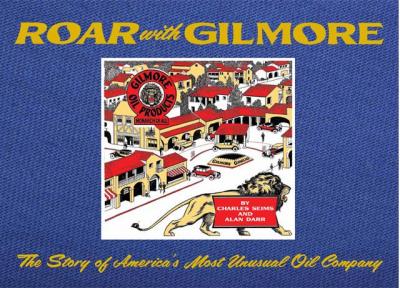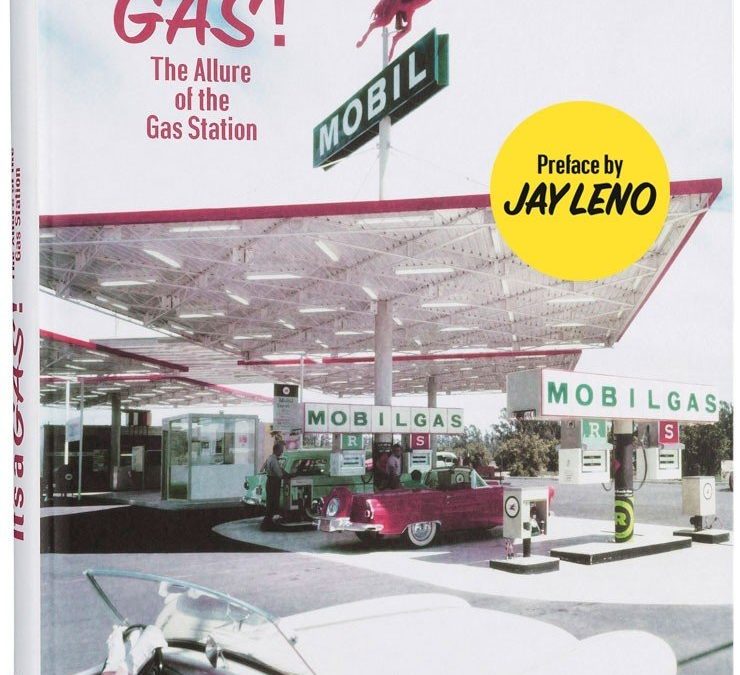
The first gasoline was sold in pharmacies―but this was to change in the 1950s. As the car experienced its great rise in popularity, gas stations began to pop up like mushrooms out of the ground. Futuristic and progressive, these modern temples of mobility became roadside reference points for young people hungry for independence, and to everyone who strove for a sense of freedom.
It’s a Gas! explores the surprisingly diverse world of the gas station―a functional high tech temple, a transit zone, a film set, a converted residence, or an abandoned ruin hidden in a backyard. The world of pumps is full of surprises, ready to be discovered in this book.
The preface was written by US-American talkshow legend and passionate car collector Jay Leno.
Sascha Friesike, Assistant Professor of Digital Innovation at VU University in Amsterdam and associated researcher at Alexander von Humboldt Institute for Internet and Society Berlin, is the author of the crime series Grobmann und Pieper and photographer of gas stations.
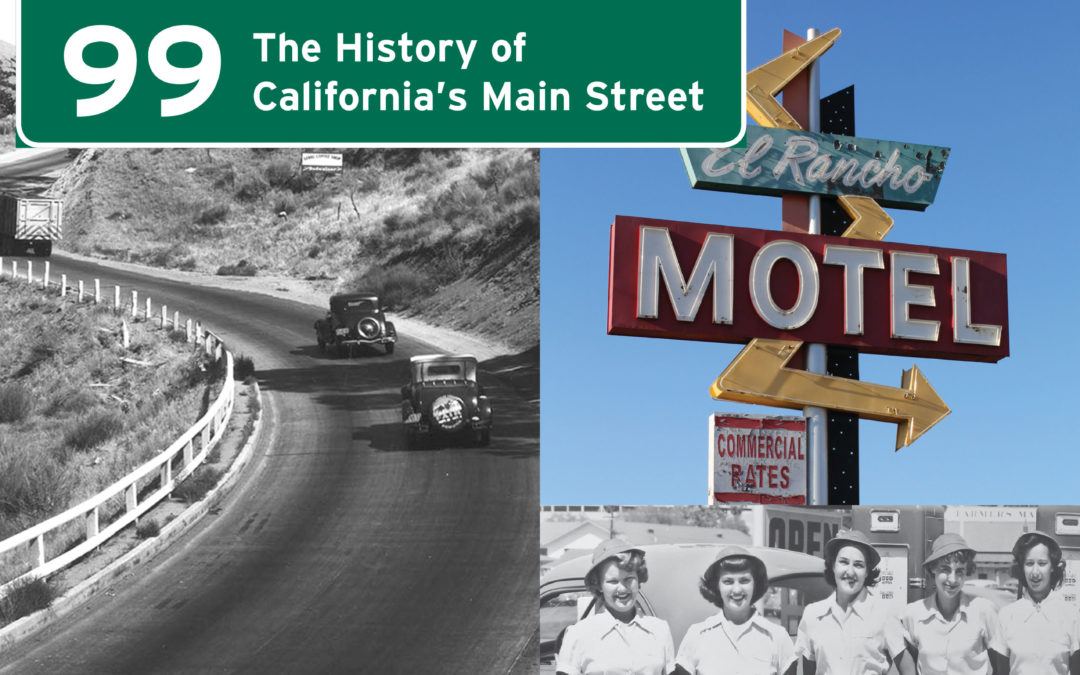
Before it was a modern freeway, California’s State Highway 99 was “the main street of California,” a simple two-lane road that passed through the downtowns of every city between the Mexican border and the Oregon state line. Highway 99: The History of California’s Main Street turns back the clock to those days when a narrow ribbon of asphalt tied the state’s communities together, with classic roadside attractions and plenty of fun along the way.
Highway 99 documents the birth, growth, and transformation of the highway; the gas stations, motels, restaurants, and attractions that flourished and declined by the roadside; and the communities, personalities, and historical events that made their mark on the highway. From the migrations of the Dust Bowl to the birth of the Bakersfield Sound to the foundation of America’s fast-food culture, the history of California has happened around Highway 99, and Highway 99: The History of California’s Main Street brilliantly depicts that history.
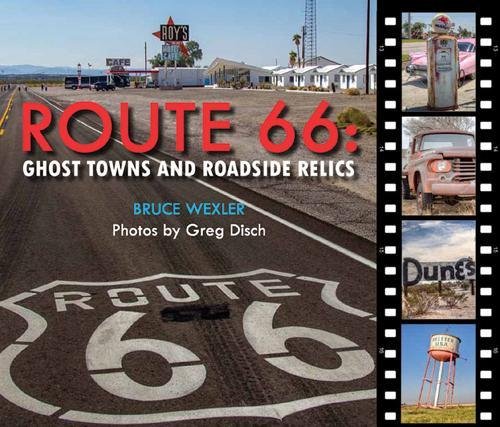
SOLD OUT
Originally paved in the 1920s, Route 66 has been a staple of the American Road Trip through the Great Depression and was a major method of the bootlegging operation. Spanning a total of 8 states and stretching from Chicago all the way to the Pacific Ocean, Route 66 was appropriately named the Motheroad. An icon of American Folklore, between the pages there are a slew of old gas stations, restaurants, diners, rest stops, and other attractions. Each must-see vestige is peppered with the history of the area.
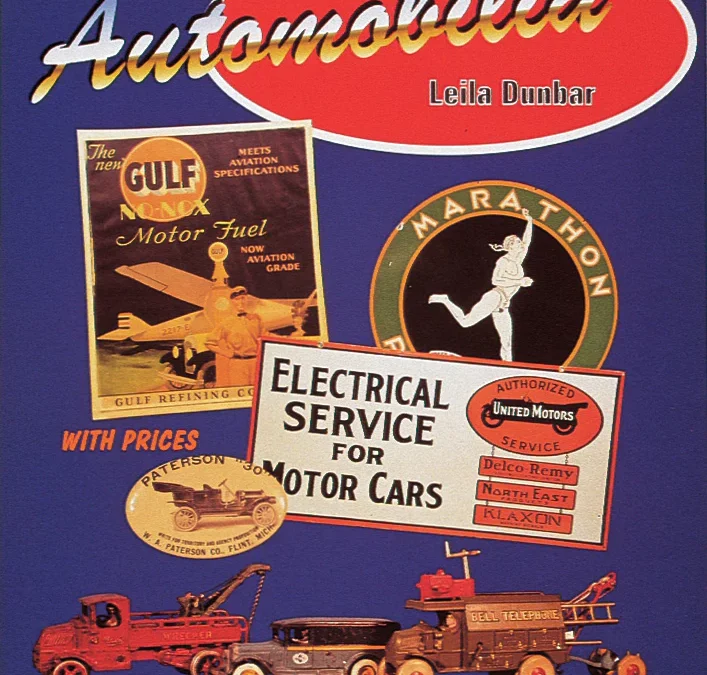
What’s “automobilia?” It’s all the great go-with items that accompanied the evolution of our auto history. It’s the signs that hung in dealerships and gas stations, the toys that young drivers-to-be played with, it’s the oil cans that poured and the dealer giveaways that promoted their products. Automobilia, the book explores the vintage signs, toys, and giveaways produced during the 100-year life of the auto industry, which changed the course of history forever. The history of the auto is captured in more than 500 photos, with information-packed captions and a corresponding price guide. Automobilia is an invaluable reference for anyone fascinated by the story of the horseless carriage, and a must-have for both beginner and long-time collectors.
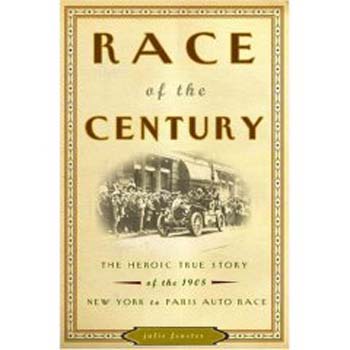
“17 men, 6 cars, and a 21,000-mile race across 3 continents
On the morning of February 12, 1908, six cars from four different countries lined up in Times Square, surrounded by a frenzied crowd. The men who competed in the New York to Paris auto race were an international roster of personalities: a charismatic Norwegian outdoorsman, a witty French nobleman, a pair of Italian sophisticates, an aristocratic German army officer, and a cranky mechanic from Buffalo, New York. At a time when most people had never seen an automobile, these adventurous men set their course over mountain ranges, through Arctic freeze, and desert heat. There were no gas stations, no garages, and no replacement parts in case of emergency.
Two men rose to the top. Ober-lieutenant Hans Koeppen, a rising officer in the Prussian army, led the German team in their canvas-topped 40-horsepower Protos. His amiable personality belied a core of sheer determination, and by the race’s end, he had won the respect of even his toughest critics. His counterpart on the U.S. team was George Schuster, a blue-collar mechanic who led the Americans in their lightweight 60-horsepower Thomas Flyer. A born competitor, Schuster battled Koeppen until the very end. Ultimately the German and the American would be left alone in the race, fighting the elements, exhaustion, and each other until the winning car’s glorious entrance into Paris, on July 30, 1908.”
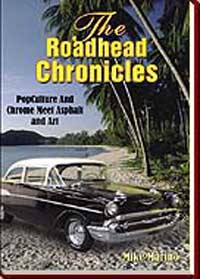
Mike Marino has delivered a one-two punch of a book that goes under the V-8 hood of the American car culture. It’s style is fast paced, rapid fire and colorful, and examines the Chrome-magnon car and pop culture of America with a sense of humor, history, and a dose of horsepower haiku.
THE ROADHEAD CHRONICLES separates the world of the Roadhead into three distinct sections. You’ll jump into the backseat world of Saturday night drive-in movies, V-8’s and Vietnam, fuzzy dice, carhops, jukeboxes, and the rock ‘n roll rebel without a cause switchblade, black leather jacket lifestyle of the blue suede cruise of the 50’s and 60’s, not to mention the muscle-flexing Motor City of the ’70s where GTO’s ruled the roads!
THE ROADHEAD CHRONICLES will also gas up and kick asphalt through the world of Route 66, the kitsch culture of roadside nostalgia, neon motels, cafes, gas stations and diners, along with an offbeat look at Mystery Spots, Rock City and other asphaltian oddities that have become destinations and road culture icons in and of themselves.
THE ROADHEAD CHRONICLES wraps up with previously published articles of Mike’s Roadhead Columns that explore the city where the “beat” goes on in Jack Kerouac’s North Beach, Jerry Garcia’s spare change Haight Ashbury, all the way to Cadillac Ranch and the famous Ken Kesey bus tour of America in the ’60s. So buckle up, lock and load, and get ready to KICK ASPHALT as you fire up the engine and hit the highway in…THE ROADHEAD CHRONICLES!!
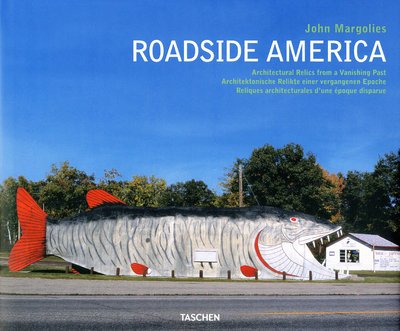
The native genius of America’s mid-era automobile culture
Before the advent of corporate communications and architectural uniformity, America’s built environment was a free-form landscape of individual expression. Signs, artifacts, and even buildings ranged from playful to eccentric, from deliciously cartoonish to quasi-psychedelic. Photographer John Margolies spent over three decades and drove more than 100,000 miles documenting these fascinating and endearingly artisanal examples of roadside advertising and fantasy structures, a fast-fading aspect of Americana.
This book brings together approximately 400 color photographs of Main Street signs, movie theaters, gas stations, fast food restaurants, motels, roadside attractions, miniature golf courses, dinosaurs, giant figures and animals, and fantasy coastal resorts. In an age when online shopping and mega-malls have reconfigured American consumerism, stripping away idiosyncrasy in favor of a bland homogeneity, Margolies’s elegiac 30-year survey reminds us of a more innocent unpredictable and colorful past.

Some of the hottest collectibles today reflect our passions for the automobile. This book pictures filling station memorabilia, motoring products, and automotive advertisements in vivid color. A great variety of neon, enameled, and wooden signs, illustrated oil cans, and brightly colored gas pumps from the days of the earliest roadsters are presented here. As oil companies and filling stations changed to keep up with America’s evolving culture, they varied the containers and advertisements for their products. From the turn of the century to modern times, the hundreds of filling station collectibles on display in this book fill 563 color photographs and an up-to-date price guide.









